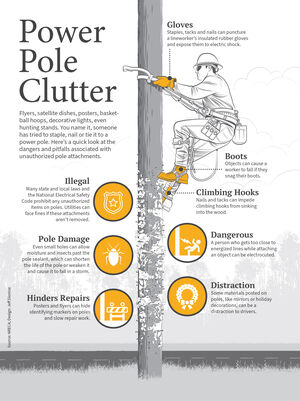Sykes-Belltower history continued (1909-1939)
Part II
February 2, 2018
by Sherry Farwell, Ned Summers & Marguerite Goeders Rozelle
GENERAL POPULATING AND DEPOPULATING FORCES
The homesteading era within the Sykes-Belltower area had six major drivers: 1) The Enlarged Homestead Act of 1909 increased the maximum number of acres for a homestead from 160 to 320 acres in order to attract settlers into more marginal lands. 2) The initial 1885 U.S. Government survey in present day Carter County only established approximate township boundaries. An official detailed land survey for most of Sykes-Belltower was not completed until 1909-10. This latter survey enabled legal land descriptions on official homestead applications. 3) A second large wave of approximately 15 million new immigrants arrived in the United States during 1901-20. 4) The Milwaukee Railroad was completed to Marmarth & Baker in 1908 and the Milwaukee Land Company conducted an extensive advertising campaign to attract people to this region. 5) The growing business communities of Baker, Camp Crook, and Ekalaka offered new settlers a variety of essential supplies and services that included "locators" and claim offices to help them find land available for homesteading. 6) Acquiring multiple acres of land for a low cost and starting a new life with seemingly unbounded opportunities were attractive prospects to many adventurous souls.
The local result of these homesteading forces was summarized in a note published in the Camp Crook Range Gazette on April 28, 1910: "Seen any homesteaders? No. Well just go to the Bell Tower divide and look over. Shacks and tents everywhere." The photo in Figure 1 shows a homesteader's shack that was near Sykes-Belltower. The homesteading law of 1909 required a claimant to complete a three-step process: file an application on land not already claimed, improve the land according to some general specifications (called "proving up"), and then file for a deed of title, i.e., a land patent. The last step was often accomplished by filing an affidavit containing the signatures of witnesses that verified the claimant had lived on the claim and made the designated improvements. The homestead procedure often required 3 to 5 years to complete, so a homesteader would have lived on the claim for several years prior to obtaining an actual deed to the land within the claim. The BLM General Land Office (GLO) records reveal that 101 homestead land patents were issued just in Township 2S 60E (the 6-mile square heartland of Sykes/Belltower) between 1912-36. Unfortunately, BLM GLO has no data for the number of homestead applications, but one can assume that at least 33% of the claim applicants failed to satisfy the government's homesteading requirements and were not issued a land patent.
Therefore, Range Gazette readers who looked over the Bell Tower divide in 1910-20 probably saw ~200 prospective homesteads located in the Sykes-Belltower area outlined in the map labeled Figure 2. Many of these new homesteaders arrived from distant locations and were unfamiliar with this region's farming, ranching, weather, transportation, social, communication, and water supply challenges. For those homesteaders with a genuine intent to be farmers and/or ranchers, the weather conditions from 1909-17 were generally favorable with wet springs/summers and mild winters with minimal snow. The relatively bad winter in 1911-12 was an exception to the otherwise encouraging weather trend and was a harbinger for the severe weather coming in 1919-20.
The extremely dry spring/summer of 1919 and the terrible winter of 1919-20 changed how many of these homesteaders viewed their ventures. During the spring and summer of 1919, there was no moisture, and nothing turned green. Cactus, sagebrush and Russian thistle were the only vegetation on an otherwise barren landscape. Most people cut and stacked the thistles and picked up wagon loads of pine needles in preparation for winter feeding of their livestock. For those able to find and buy hay, the cost was $50-100 per ton and the loose hay still had to be transported to their sites. Hence, stock owners in this area entered the Fall and Winter with more animals than hay. Winter started with snow storms in September, by October the snow was knee deep, and from then through March terrible blizzards, 3-6 feet of crusted snow, drifts of 10 feet, snow blocked roads and multiple periods of minus 20-degree days/nights produced a major disaster. (According to official total snowfall data for Camp Crook, both 1919-20 and 1949-50 had identical totals of 66 inches.) The March 11, 1920 edition of the Range Gazette summarized the grim situation: "Last week's storm and below-zero weather was particularly severe on the already weakened livestock interests of this section of country. There is no need for keeping back the facts about it-the losses are greater than ever before known since the settlement of this country, and the winter of 1919-20 will go down in the annals as a breaker of stockmen as well as a weather record breaker." Many new homesteaders were disheartened, threw in the towel, packed up and moved on.
Those hardy individuals that stayed were rewarded with a subsequent series of years that were in general favorable to ranchers and farmers. For example, 1922 was a fantastic crop and hay year. Then the good times ended abruptly with the arrival of yet another bad winter in 1926-27 (74 inches of total snowfall), the "Great Depression" during 1929-39, the drought "Dust Bowl" years from 1934-39, and the jack rabbit & grasshopper plagues of 1926-36). This combination of catastrophic events caused unbelievable disruption and suffering to the lives of everyone in the Great Plains area, including the good people in the Sykes-Belltower community. Again, many people decided to relocate rather than risk even greater personal and financial losses. Those who opted to stay and thereby risk everything certainly deserve the title of rough & tough "Survivors". These "Survivors" combined optimism and determination with problem-solving skills that on average allowed them to fall forward. Using his inherent humor, George H. Farwell Jr. expressed this "Survivor" trait in a different manner: "One does not have to be crazy to stay here, but it helps."
... to be continued






Reader Comments(0)